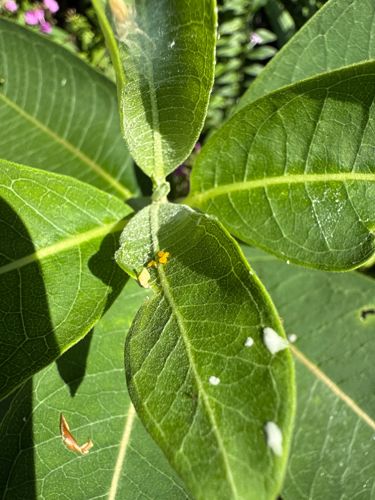Monarch Butterfly Larva (Caterpillar)
Scientific Name: Danaus plexippus
Order & Family: Order: Lepidoptera, Family: Nymphalidae (Brush-footed butterflies)
Size: Newly hatched larvae are about 2-3 mm (0.08-0.12 inches) long. Fully grown (fifth instar) larvae can reach 4.5-5 cm (1.8-2 inches) in length.

Natural Habitat
Found wherever milkweed plants grow, which includes meadows, fields, roadsides, open woodlands, and gardens across North and South America. The image shows the larva on a milkweed leaf, which is their host plant.
Diet & Feeding
Monarch butterfly larvae feed exclusively on milkweed plants (Asclepias species). They consume the leaves, stems, and flowers.
Behavior Patterns
Monarch larvae hatch from eggs laid singly on the underside of milkweed leaves. They go through five instars (larval developmental stages), shedding their skin between each. The entire larval stage takes about 2 weeks. They are voracious eaters, growing rapidly. Once mature, they pupate, forming a chrysalis, from which the adult butterfly emerges.
Risks & Benefits
Benefits: Monarch butterflies are important pollinators; their larvae help control milkweed plant populations. The presence of monarch caterpillars indicates a healthy milkweed habitat, which is crucial for the survival of the monarch species. Risks: No direct risks to humans. The caterpillars are toxic to predators due to compounds ingested from milkweed, making them unpalatable.
Identified on: 8/13/2025